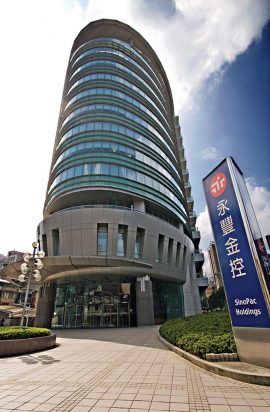Green transport charges ahead
As part of a global effort to reduce carbon emissions, the high-tech island is leading the way in the development of electric vehicles
As part of a worldwide effort to reduce carbon emissions and surging oil prices, many governments now support the development of electric vehicles (EVs).
With motorcycles and scooters accounting for two-thirds of the island’s 22 million motor vehicles, the authorities see much potential in the EV industry, funding organisations such as the Industrial Technology Research Institute.
Jerry Wang, director of the Intelligent Electric Vehicle Promotion Office, set up in 2010 by the Ministry of Economic Affairs (MOEA), notes that the high population density of the island makes it an ideal place for EVs. The major challenge for EV developers, however, is to improve technology while making EVs widely affordable.
Developing the technology
The authorities began encouraging the development and use of electric cars in 2010 several years after manufacturers began working on EV development. The Yulon Group, the largest of the island’s automakers, for example, started EV development in 2005, producing the Tobe in 2009 and the Luxgen EV+ in 2010. Specifications from Yulon show that the Tobe can travel up to 100 km, while the Luxgen EV+ minivan has a maximum cruise range of 200 km.
RAC Electric Vehicle Inc. in Taoyuan County has specialised in electric buses since the firm’s establishment in 2005. RAC works with domestic and international companies on e-bus batteries, chassis and electric motor design, as well as on EV assembly and engineering.
In 2011, RAC’s “Race 150” passenger bus became the first of the island’s road-licensed electric buses, put into service by public bus companies in New Taipei, Hsinchu and Kaohsiung. RAC chairman Alex Tsai points out that his father founded the company at the late age of 70 because he saw great potential in the “niche” EV bus market.
There are currently 11 electric car manufacturers on the island. EV manufacturers there have already seen marked success in the export market, exporting approximately 19,000 e-scooters between 2009 and 2013.
Wang notes that serious interest in EVs only started around a decade ago and since the technology for manufacturing EVs and gasoline-powered vehicles is different, new supply chains are required. Wang adds that the island can make its EVs stand out in the export market by applying its information and communication technology to provide driver information and improve safety systems.
Promoting EVs
The authorities began organising the EV Taiwan exhibition in 2011 to put the EV industry on the map. According to the Taiwan External Trade Development Council, the show’s organiser, the first EV Taiwan exhibition featured 68 exhibitors and attracted about 18,000 visitors, 1,660 of whom were foreign buyers. At the show held in April 2014, the number of exhibitors had increased to 92, and 7,000 of the nearly 51,000 visitors came from abroad. “From batteries and motors to car electronics and electricity management systems, EV Taiwan offers buyers one-stop shopping for all related products,” Wang says.
In August 2013 Hsinchu-based Pihsiang Electric Vehicle Manufacturing Co shipped the first batch of its Achensa EVs to Europe. A very compact two-seater designed for urban transportation, the Achensa has a cruise range of 85 km, while charging takes only 90 minutes.
While EVs are a very recent arrival in the transportation industry, few people would disagree that the sector is poised to see fast growth.
Aiming to play a role in this market, the island has already started its engine and is ready to accelerate.
This article originally appeared in Taiwan Review on 1 July 2014.
www.taiwanreview.nat.gov.twEV manufacturers have already seen marked success in the export market, exporting approximately 19,000 e-scooters between 2009 and 2013.
Case study: Bank Sinopac
Bank SinoPac, a wholly-owned subsidiary of SinoPac Holdings, provides a wide range of financial services and innovative products to customers through its branches and subsidiary banks in the Far East and the United States.
Since its inception, Bank SinoPac has been devoted to product innovation and integration. Starting in 2000, the bank took the initiative to launch niche products such as money management account, B-to-B Pay-Web, e-Factoring and Factoring by Insurance. These and other services form an efficient platform that allows customers to allocate their funds and manage their assets without any restrictions on time or geography.
In December 2013 Bank SinoPac obtained approval from the China Banking Regulatory Commission to set up a wholly owned subsidiary in Nanjing, which began operations in March 2014. In addition to its Nanjing subsidiary and domestic and offshore branches, Bank SinoPac will serve customers by teaming up with Industrial and Commercial Bank of China (ICBC), which owns more than 17,000 branches domestically and nearly 400 branches globally. By drawing on these shared advantages and synergies, Bank SinoPac is poised to become the most flexible, convenient service provider in the cross-strait region.



